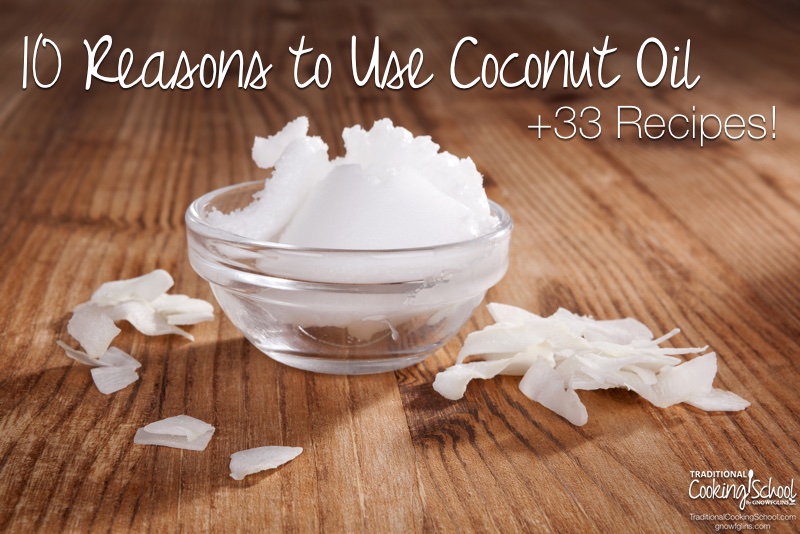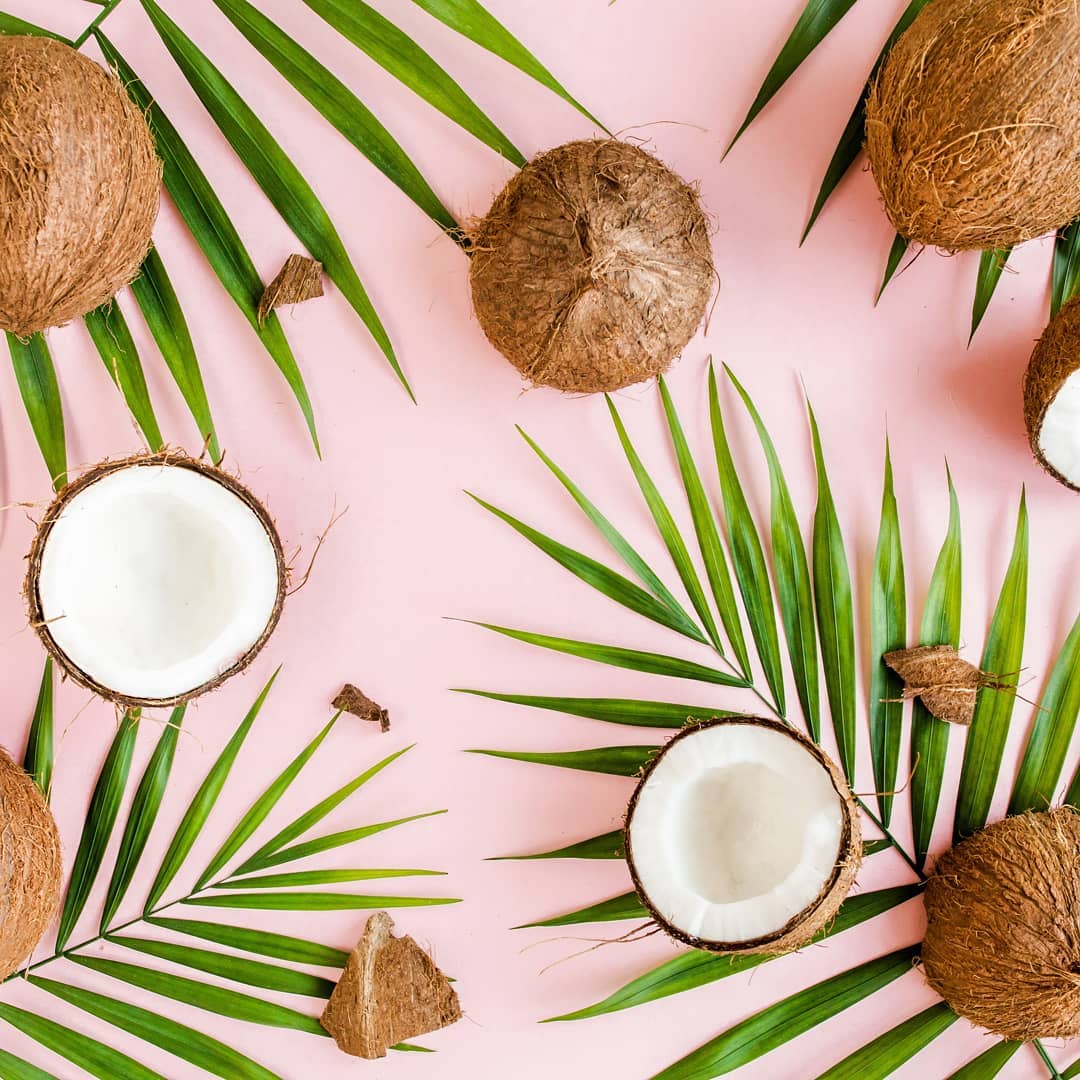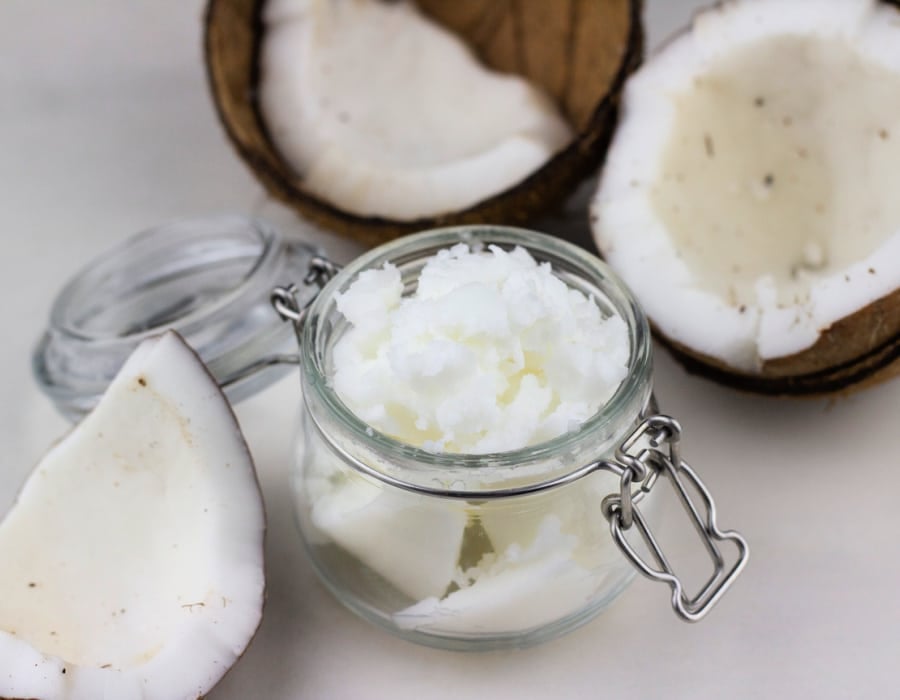Discovering how to incorporate coconut oil into your cooking repertoire opens up a world of flavorful and healthful possibilities. This versatile ingredient not only enhances the taste and texture of a variety of dishes but also offers numerous nutritional benefits that can support a balanced diet.
Understanding the different types of coconut oil, their specific applications, and proper preparation techniques can help you maximize their culinary potential. Whether used for frying, baking, or flavoring, coconut oil can elevate your cooking experience and introduce new, exciting flavors to your meals.
Introduction to Using Coconut Oil in Cooking
Coconut oil has gained popularity worldwide as a versatile and nutrient-rich cooking fat. Its unique composition not only enhances flavor but also offers various health benefits, making it a favored choice among culinary enthusiasts and health-conscious individuals alike. Understanding how to incorporate coconut oil into your cooking routine can elevate your dishes while supporting a balanced diet.
The culinary and nutritional advantages of coconut oil stem from its high content of medium-chain triglycerides (MCTs), which are easily digestible fats that provide quick energy and may promote metabolic health. Additionally, coconut oil imparts a subtle, tropical aroma and flavor, enriching a wide range of recipes from baked goods to stir-fries.
Types of Coconut Oil and Their Suitability for Cooking
Different forms of coconut oil cater to various culinary applications, each with distinct characteristics that influence their suitability for specific dishes. Recognizing the differences among refined, virgin, and unrefined coconut oils can enhance your cooking outcomes and ensure optimal flavor and health benefits.
| Type of Coconut Oil | Processing Method | Best Used For | Suitability for High-Heat Cooking | |
|---|---|---|---|---|
| Refined Coconut Oil | Processed through bleaching and deodorizing to remove impurities and coconut flavor. | Neutral, mild aroma | Frying, sautéing, baking where a neutral flavor is preferred | Excellent, due to high smoke point (~400°F or 204°C) |
| Virgin Coconut Oil | Cold-pressed from fresh coconut meat without chemical refining. | Distinct coconut aroma and flavor | Cooking methods that benefit from coconut flavor, such as curries, baking, or drizzling over dishes | Good, with a slightly lower smoke point (~350°F or 177°C) |
| Unrefined Coconut Oil | Minimal processing, similar to virgin, often used interchangeably. | Pronounced coconut scent and taste | Flavorful applications like smoothies, spreading, or finishing dishes | Suits medium-heat cooking; caution with very high temperatures due to lower smoke point |
It’s essential for cooks to select the appropriate coconut oil type based on the specific dish and cooking method. For frying and high-temperature applications, refined coconut oil’s high smoke point makes it ideal, whereas virgin or unrefined options add flavor and nutritional value to dishes prepared at medium or lower heats.
Health Considerations and Common Misconceptions
Despite its numerous benefits, coconut oil is often surrounded by misconceptions regarding its health impacts. While it is rich in saturated fats, these fats differ from those found in processed foods and may have different effects on cardiovascular health.
Research indicates that the medium-chain triglycerides (MCTs) in coconut oil are metabolized quickly by the liver, potentially aiding in weight management and providing a quick source of energy. Some studies suggest that moderate consumption of virgin coconut oil can be part of a balanced diet. However, health considerations recommend limiting intake, especially for individuals with existing heart conditions, as current guidelines still advise moderation in saturated fat consumption.
“While coconut oil can be a beneficial addition to a healthful diet, it should be used in moderation, and its inclusion should complement a balanced intake of various fats.” – Nutritional Guidelines
Common misconceptions include the belief that coconut oil can drastically reduce cholesterol levels or prevent heart disease. In reality, the impact of coconut oil on cholesterol varies among individuals, and it is advisable to consult healthcare professionals for personalized dietary advice. Incorporating coconut oil as part of a diverse diet, alongside other healthy fats such as olive oil and avocados, ensures a balanced approach to health and nutrition.
Preparing Coconut Oil for Cooking
Proper preparation of coconut oil is essential to maximize its benefits and ensure optimal performance during cooking. Whether melting it to a liquid state or solidifying it for specific recipes, understanding the correct methods and storage techniques will help maintain its freshness and flavor. Accurate measurement and effective blending also contribute to consistent and delicious results in your culinary creations.
Coconut oil’s versatility in cooking often necessitates changing its physical state. For example, baking recipes may require solid coconut oil, while sautéing or frying typically use it in a liquid form. Proper handling ensures that the oil integrates seamlessly into your dishes, preserving their quality and nutritional value.
Melting and Solidifying Coconut Oil
To adapt coconut oil for various cooking needs, you need to either melt it into a liquid or allow it to solidify. The process is simple but requires attention to temperature to prevent degradation of the oil’s beneficial properties.
- Melting Coconut Oil:
- Use a gentle heat source such as a double boiler or a microwave to melt coconut oil. For a double boiler, fill the bottom compartment with water and place the jar or a heat-safe bowl containing the coconut oil on top. Heat gently until fully liquefied, stirring occasionally.
- In a microwave, heat in short bursts of 10-15 seconds, stirring in between until the oil becomes clear and liquid. Avoid overheating to prevent loss of nutrients.
- Solidifying Coconut Oil:
- Allow melted coconut oil to cool at room temperature, then transfer it to a clean container. Place the container in the refrigerator or freezer for faster solidification, typically taking 1-2 hours.
- Ensure the container is airtight to prevent any absorption of odors from the surroundings, which could affect the flavor.
Measuring and Storing Coconut Oil
Accurate measurement and proper storage are critical for maintaining coconut oil’s freshness and ensuring consistent results in cooking. The right approach helps prevent spoilage and preserves its nutritional integrity.
When measuring coconut oil, especially in solid form, it is advisable to use a digital kitchen scale for precision. For liquid coconut oil, measuring cups with clear graduations provide accurate quantities, typically in tablespoons or milliliters. For recipes requiring specific amounts, measuring ensures consistency and prevents waste.
“Store coconut oil in a cool, dark place away from direct sunlight to extend its shelf life.”
Proper storage involves keeping coconut oil in an airtight container, ideally in a pantry or cupboard where temperature remains stable. If kept in the refrigerator, the oil may harden, but it can be easily melted again when needed.
Blending Coconut Oil with Other Ingredients
In many recipes, coconut oil needs to be integrated smoothly with other components. Proper blending enhances texture, flavor, and overall quality of the dish.
To blend coconut oil effectively:
- Ensure coconut oil is in the appropriate state—melted for mixing into liquids or softened for incorporation into dry ingredients.
- Use a whisk, fork, or spoon to thoroughly mix coconut oil with ingredients such as spices, sweeteners, or fruit purees, creating a uniform blend.
- When incorporating coconut oil into batters or doughs, add it gradually while mixing to achieve even distribution and prevent clumping.
For emulsifying coconut oil with other fats or liquids, such as in salad dressings or sauces, combining with a stabilizer like honey or mustard can improve consistency and prevent separation.
Cooking Techniques Using Coconut Oil
Integrating coconut oil into various cooking methods enhances the flavor profile and texture of numerous dishes. Its unique properties make it a versatile choice, suitable for frying, sautéing, roasting, and baking. Understanding how to properly utilize coconut oil in these techniques ensures optimal results while preserving its health benefits and delicious aroma.
Each cooking method involves specific procedures and considerations to maximize the benefits of coconut oil. Adjusting heat levels appropriately is crucial to prevent burning or smoking, which can compromise both flavor and safety. Below, detailed insights into each technique are provided to help you achieve the best possible outcomes when cooking with coconut oil.
Frying with Coconut Oil
Frying in coconut oil imparts a rich, slightly sweet aroma and creates a crispy exterior on foods. The high smoke point of refined coconut oil, approximately 450°F (232°C), makes it suitable for deep-frying and pan-frying. To achieve optimal results:
- Use enough coconut oil to fully submerge or coat the food evenly, ensuring consistent cooking.
- Preheat the oil gradually over medium-high heat, allowing it to reach the desired temperature without overheating.
- Maintain a steady temperature between 350°F to 375°F (177°C to 191°C) for most frying applications.
- Monitor the oil closely, adjusting the heat to prevent reaching the smoke point, which can cause off-flavors and health hazards.
- Use a thermometer if necessary to ensure precise temperature control.
It is essential to avoid overheating coconut oil during frying to prevent smoking, which indicates the oil is breaking down and producing potentially harmful compounds.
Sautéing with Coconut Oil
Sautéing with coconut oil is ideal for cooking vegetables, herbs, and small cuts of meat quickly while preserving their flavor and texture. The moderate smoke point of virgin coconut oil (around 350°F or 177°C) requires careful heat regulation:
- Heat the coconut oil over medium heat, allowing it to melt and warm evenly.
- Add ingredients once the oil is shimmering but not smoking, to prevent burning.
- Stir frequently to distribute heat evenly and prevent sticking or burning of delicate ingredients.
- Adjust the heat as necessary, especially when cooking ingredients that release moisture or require longer cooking times.
To enhance flavor, combine coconut oil with aromatic herbs or spices during sautéing, which infuses dishes with a subtle coconut aroma.
Roasting with Coconut Oil
Roasting vegetables, nuts, and meats with coconut oil yields a caramelized, crispy exterior and tender interior. The process involves coating ingredients evenly to ensure uniform browning:
- Preheat the oven to the appropriate temperature, typically between 375°F and 425°F (190°C to 220°C).
- Mix coconut oil with seasonings and toss it with the ingredients, ensuring each piece is coated evenly.
- Spread items in a single layer on a baking sheet to promote even cooking and browning.
- Monitor the roasting process, adjusting temperature if necessary, to prevent burning or excessive smoke.
- Consider flipping or stirring ingredients halfway through roasting for consistent results.
Using coconut oil during roasting not only enhances flavor but also contributes to a golden, crispy texture, especially when working with root vegetables or nuts.
Baking with Coconut Oil
In baking, coconut oil serves as a healthier alternative to butter or shortening, adding moisture and a subtle coconut flavor to baked goods such as cakes, muffins, and cookies. Proper incorporation is key:
- Replace fats called for in recipes with melted coconut oil, generally substituting 1:1 ratio.
- Ensure coconut oil is melted and cooled slightly before mixing to prevent alterations in batter consistency.
- Mix thoroughly to distribute the fat evenly, ensuring a uniform crumb or texture.
- Adjust oven temperature slightly if necessary, as coconut oil can affect baking times and browning.
- Keep an eye on baked goods to prevent over-browning, especially when using unrefined coconut oil, which has a stronger aroma.
For best results, use virgin coconut oil in recipes where its aromatic profile complements the flavors, while refined oil is suitable for neutral-tasting baked goods.
Recipes Featuring Coconut Oil
Incorporating coconut oil into your cooking opens up a realm of delicious and nutritious possibilities across all meals of the day. From hearty breakfasts to satisfying dinners and wholesome snacks, coconut oil imparts a unique flavor and beneficial properties that enhance both taste and health. Below, a curated selection of popular recipes demonstrates the versatility of coconut oil and offers guidance on preparing flavorful dishes that leverage its natural qualities.
This section explores a variety of recipes that integrate coconut oil seamlessly, highlighting their ingredients, preparation methods, and estimated cooking times. Whether you are baking, dressing salads, or creating stir-fries, coconut oil can elevate your culinary experience with its rich aroma and health benefits.
Breakfast Recipes Featuring Coconut Oil
Starting the day with a nourishing breakfast that includes coconut oil provides energy and promotes satiety. Some of the most favored options include coconut oil pancakes, granola, smoothies, and scrambled eggs cooked with a hint of coconut flavor. These recipes often emphasize wholesome ingredients, making them ideal for a balanced morning meal.
- Coconut Oil Pancakes: Mix whole wheat flour, baking powder, a pinch of salt, and shredded coconut. Whisk eggs, milk (or plant-based alternative), and melted coconut oil. Combine wet and dry ingredients and cook on a preheated griddle until golden brown. Serve with fresh fruits and a drizzle of honey.
- Coconut Granola: Toss rolled oats, shredded coconut, nuts, and seeds with melted coconut oil and a touch of honey. Spread evenly on a baking sheet and bake at 350°F (175°C) for 20-25 minutes, stirring occasionally. Cool and store in an airtight container.
- Coconut Oil Smoothie: Blend banana, spinach, Greek yogurt, a tablespoon of coconut oil, and a splash of almond milk until smooth. This provides a creamy texture with added healthy fats.
Lunch and Dinner Recipes Featuring Coconut Oil
Lunch and dinner dishes with coconut oil often focus on tropical flavors and healthy fats, making them both delicious and beneficial. Popular options include stir-fries, curries, roasted vegetables, and grilled meats prepared with coconut oil for added moisture and flavor.
- Coconut Curry Chicken: Sauté diced chicken in coconut oil until browned. Add chopped onions, garlic, ginger, and curry powder, cooking until fragrant. Incorporate coconut milk and simmer until the chicken is cooked through. Serve over steamed rice.
- Roasted Vegetables: Toss chopped sweet potatoes, carrots, and bell peppers with melted coconut oil, salt, and herbs. Roast at 400°F (200°C) for 25-30 minutes, stirring halfway through.
- Grilled Shrimp with Coconut Marinade: Marinate shrimp in a mixture of coconut oil, lime juice, garlic, and cilantro for 30 minutes. Grill until pink and cooked through, serving with a fresh salad.
Snacks and Baked Goods Featuring Coconut Oil
Snack preparations and baked goods benefit greatly from coconut oil, which adds moisture and a subtle tropical flavor. From cookies to energy bars, these recipes are both satisfying and nourishing.
- Coconut Oil Cookies: Combine coconut oil, brown sugar, egg, and vanilla extract. Mix in flour, baking soda, shredded coconut, and chopped nuts. Form into cookies and bake at 350°F (175°C) for 10-12 minutes.
- Coconut Energy Bars: Blend dates, nuts, shredded coconut, and melted coconut oil in a food processor. Press into a lined baking dish and refrigerate until firm. Cut into bars for a quick energy boost.
- Coconut Muffins: Mix flour, baking powder, shredded coconut, and a pinch of salt. Whisk together eggs, coconut oil, honey, and milk. Combine wet and dry and bake at 375°F (190°C) for 20-25 minutes until golden.
Recipes for Dressings and Marinades with Coconut Oil
Creating dressings and marinades with coconut oil enhances salads and proteins with a creamy texture and rich flavor. These preparations often combine coconut oil with citrus, herbs, and spices to produce balanced and appealing condiments.
Sample Coconut Oil Dressing: Whisk together 3 tablespoons of melted coconut oil, juice of one lemon, a teaspoon of honey, minced garlic, salt, and pepper. Toss with mixed greens or use as a marinade for grilled chicken.
- Coconut Lime Marinade: Mix coconut oil, lime juice, chopped cilantro, garlic, and chili flakes. Marinate chicken, fish, or tofu for at least 30 minutes before cooking.
- Creamy Coconut Vinaigrette: Blend coconut oil, apple cider vinegar, Dijon mustard, honey, and a pinch of salt. Use as a dressing for salads or slaws.
table
Recipe Ingredients Cooking Time Coconut Pancakes Whole wheat flour, baking powder, shredded coconut, eggs, milk, coconut oil 20 minutes Coconut Curry Chicken Chicken, coconut milk, onion, garlic, ginger, curry powder, coconut oil 40 minutes Coconut Energy Bars Dates, mixed nuts, shredded coconut, coconut oil 2 hours (including refrigeration) Coconut Lime Marinade Coconut oil, lime juice, cilantro, garlic, chili flakes 30 minutes Coconut Muffins Flour, baking powder, shredded coconut, eggs, honey, coconut oil, milk 25 minutes Flavor Pairings and Enhancements
Integrating coconut oil into your culinary creations opens up a world of flavor possibilities. When combined thoughtfully with herbs, spices, and other ingredients, coconut oil can elevate both the aroma and taste of a wide variety of dishes. Whether you’re aiming for a subtle enhancement or a bold flavor statement, understanding how to pair and infuse coconut oil can significantly improve your cooking experience and outcomes.Flavor pairing with coconut oil involves considering the natural sweetness and tropical aroma that it imparts.
By thoughtfully combining it with herbs and spices, you can create harmonious dishes that appeal to diverse palates. Infusing coconut oil with complementary flavors allows for a more nuanced and layered taste, making your meals more complex and delightful.
Infusing Coconut Oil with Flavors
Infusing coconut oil is an excellent method to incorporate specific flavors directly into the fat, allowing the essence to permeate your dishes. To infuse, gently heat the coconut oil with herbs, spices, or other ingredients, then strain out the solids once the desired flavor has been absorbed. This process enhances the oil’s aroma and taste, making it a versatile addition to dressings, sautés, and baked goods.Popular infusions include garlic, vanilla, and chili:
Garlic
Gently heat coconut oil with crushed garlic cloves until fragrant. This infusion adds a savory depth, perfect for Asian-inspired stir-fries or marinades.
Vanilla
Steep vanilla beans or vanilla extract in warm coconut oil to create a sweet, aromatic base for desserts, smoothies, or breakfast dishes.
Chili
Infuse chili flakes or sliced fresh chilies into coconut oil for a spicy kick that enhances grilled meats, seafood, or even popcorn.
Flavor Pairings for Different Cuisines
The versatility of coconut oil makes it suitable for numerous global cuisines. Here are some suggested flavor combinations to inspire you:
- Thai Cuisine: Coconut oil with lemongrass, kaffir lime, ginger, and chili peppers creates vibrant, aromatic dishes like curries and stir-fries.
- Caribbean and Tropical Flavors: Combine coconut oil with mango, pineapple, lime zest, and allspice to craft refreshing tropical salads, marinades, and desserts.
- Middle Eastern Recipes: Pair coconut oil with cumin, coriander, turmeric, and cinnamon to enhance roasted vegetables, rice dishes, and kebabs.
- Sweet Baked Goods: Use vanilla, cinnamon, nutmeg, and toasted coconut to complement the natural sweetness of baked treats like muffins, cakes, and cookies.
- Healthy Snacks: Mix coconut oil with smoked paprika, garlic powder, and cayenne pepper for seasoning roasted nuts or chickpeas with a spicy, smoky flavor.
blockquote>
The key to successful flavor pairing with coconut oil is balancing its natural sweetness and tropical aroma with complementary herbs and spices that enhance, rather than overpower, the dish.
By exploring these flavor pairings and infusion techniques, you can create an array of delicious, aromatic dishes that showcase the unique qualities of coconut oil. Tailoring these combinations to your personal taste or cuisine focus allows for endless culinary creativity and enjoyment.
Tips for Cooking with Different Types of Coconut Oil
Understanding the distinct characteristics of refined and virgin coconut oil enables cooks to optimize their culinary results. Selecting the appropriate type and adapting recipes accordingly ensures both flavor integrity and health benefits are maximized, providing a richer and more nutritious cooking experience.
Coconut oil varies mainly in processing methods, flavor profiles, and nutritional content. Recognizing these differences allows for better substitution and innovative recipe development tailored to specific dietary preferences and culinary goals.
Adapting Recipes for Refined versus Virgin Coconut Oil
Refined and virgin coconut oils possess unique properties that influence their performance in various dishes. Adjusting recipes based on the type used ensures optimal texture, flavor, and nutritional outcomes. When substituting one for the other, understanding their particular qualities is essential for maintaining the integrity of the dish.
Refined coconut oil undergoes bleaching and deodorizing processes, resulting in a neutral taste and higher smoke point, typically around 400°F (204°C). It is ideal for high-heat cooking and baking where a delicate flavor is desired. Virgin coconut oil, extracted through cold pressing without extensive processing, retains a coconut aroma and flavor, with a smoke point of approximately 350°F (177°C). It is better suited for recipes where the coconut flavor is a highlight or in low- to medium-heat cooking.
Tip: When substituting refined coconut oil with virgin coconut oil, reduce the quantity slightly if a neutral flavor is preferred, as virgin oil’s aroma and taste are more pronounced.
Maximizing Flavor and Health Benefits Based on Coconut Oil Type
The choice of coconut oil impacts both the sensory profile of a dish and its nutritional value. Virgin coconut oil is rich in antioxidants, polyphenols, and medium-chain triglycerides, making it a superior option for health-conscious cooking. Conversely, refined coconut oil provides a neutral flavor, allowing other ingredients to shine without interference.
To maximize flavor when using virgin coconut oil, incorporate it toward the end of cooking or as a finishing oil on salads and grains. This preserves its aromatic qualities and health properties. For health benefits, opt for virgin coconut oil in recipes that emphasize natural nutrients, such as smoothies, dressings, or lightly sautéed vegetables. When high heat is necessary, refined coconut oil offers a stable, healthful fat source without overpowering flavors.
Guidelines for Substituting Coconut Oil in Existing Recipes
Replacing other fats with coconut oil in recipes requires attention to consistency, flavor, and temperature requirements. Coconut oil can often be substituted for butter, margarine, or other vegetable oils at a 1:1 ratio; however, adjustments may be necessary to account for flavor and melting characteristics.
For baked goods, coconut oil lends moisture and a slight sweetness, contributing to a tender crumb. When substituting in recipes that call for butter, consider reducing sugar slightly to balance the flavor, especially if using virgin coconut oil with a distinct aroma. In frying or sautéing, use refined coconut oil for higher smoke point and a neutral profile. For dressings or cold applications, virgin coconut oil can add a rich, coconutty note that enhances the dish’s overall appeal.
Guideline: When substituting coconut oil in recipes lacking other strong flavors, consider adding a splash of vanilla or citrus zest to amplify its natural aroma and create a more balanced dish.
Closing Notes
Incorporating coconut oil into your cooking methods allows for healthier and more flavorful dishes that can suit a range of culinary preferences. With proper knowledge of its types, preparation, and storage, you can enjoy the benefits of this versatile ingredient while creating delicious and wholesome meals. Embrace the opportunities coconut oil provides to enhance your culinary creations and explore new flavor combinations.



